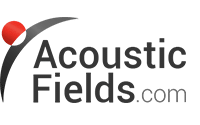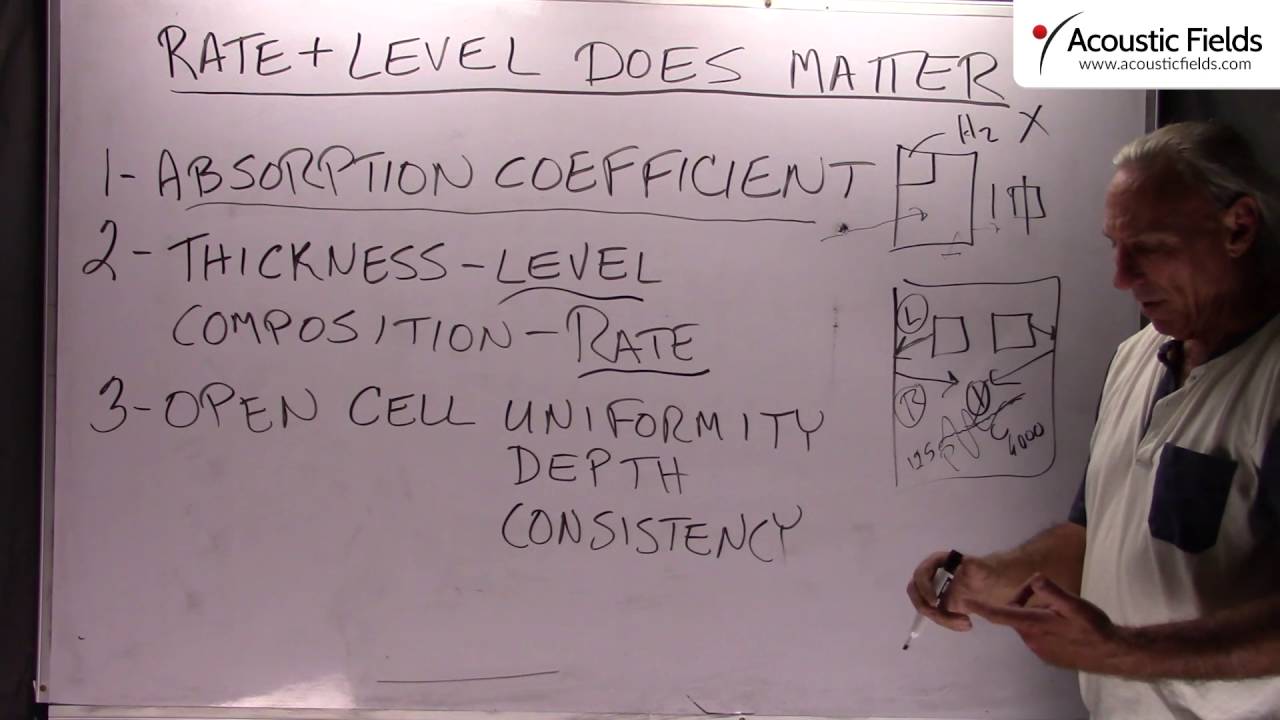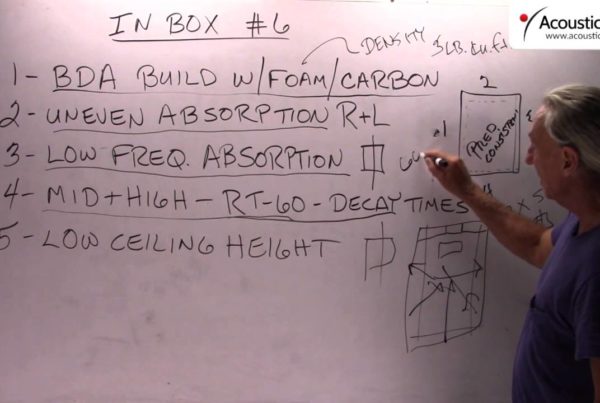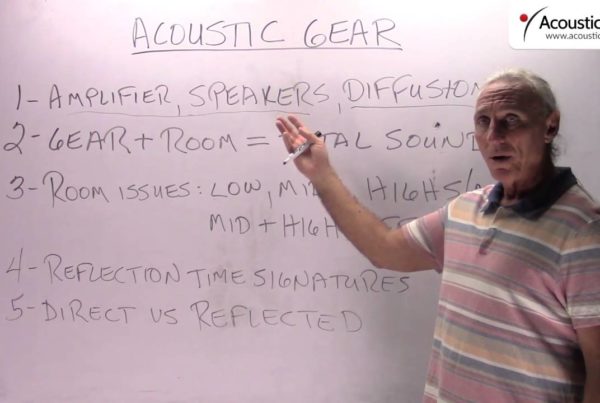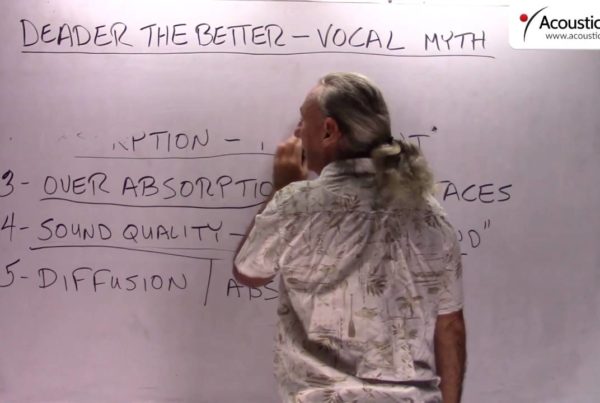Today we’re going to talk about rate and level of absorption and how rate and level of absorption matters.
So let’s talk about absorption coefficient. We’ve heard that term many, many times. And what is that? Well, that’s just the ability of the sample size and the test. And let’s call it one square foot. When you hit it with energy and then you measure the energy on the other side and then the reflected energy off of it, you’ll see that at certain frequencies it absorbs X. Now, that’s on that sample size.
So you have to make interpolations about well, how is 50% on the surface area going to sound, how is 60% on the surface area going to sound? So you have to figure all that out. And rate and level of absorption is so important in our music rooms because we’re dealing with the time signature of really critical reflections.
So we want to make sure that we’re slowing these things down at the right level and rates. Level is critical because we want to make sure we get the lowest frequency that we can within the design parameters of our product; in this case let’s just use 2 inch foam. So want to make sure we get the lowest frequency we can but more importantly, the rate.
So if our low frequency is 125, how do we do up to 6,000? You know, are we like this? Or are we like this? So the goal is to have it as smooth as possible so it’s predictable and consistent along that line somewhere. And these time signatures and these side wall reflections are so critical. So you really have to have the proper rate and proper level to look at.
Rock Soul, [inaudible 01:55] 703, 702 and all of those, those are building insulation, not designed with the rate and level that’s conducive for music and voice. Just remember that. Yes, they absorb but rate and level does matter. So you have to take that into consideration.
So pick a product that has the rate and level designed for voice and music. If you don’t know what that is we’ll talk about that on another video. So foam is open celled, everybody kind of knows that. Why? Uniformity and its consistent depth and then a consistent structure throughout the whole thing. So that’s the goal.
The cool thing about our foam, the way it’s designed it’s like a bee hive. The sides of the cells that are open, it’s a hexagon so you have nice balance in there and they’re consistent, you know. They inter-react with each other better than I can draw. So there you go.
So rate and level when you’re choosing sound absorption materials and you must look at that rate and level and you must look at the amount you’re absorbing, how long you’re going and how fast you’re going.
